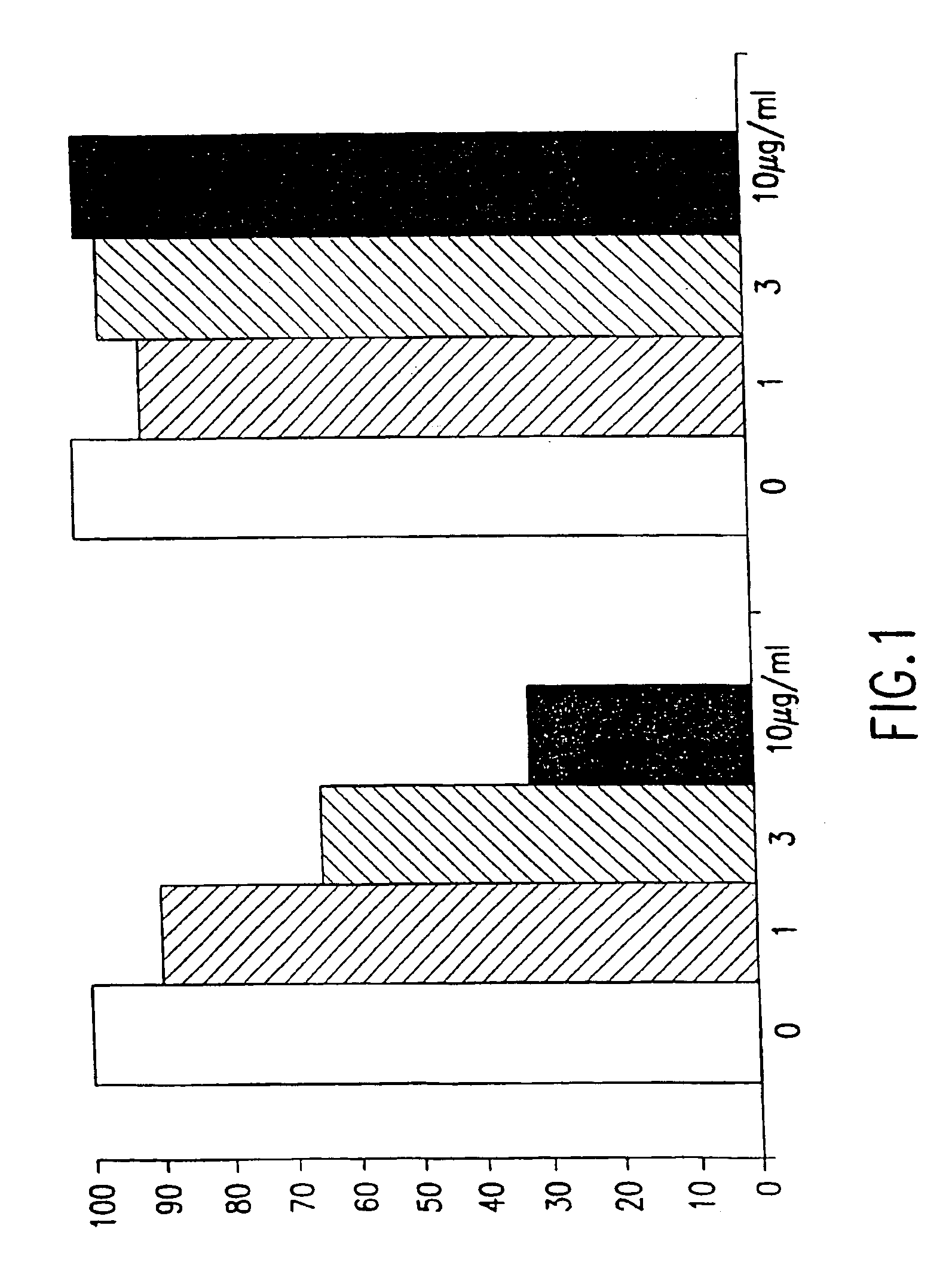Carboxymethylated retroviral regulatory proteins and interferon-α
a retroviral and regulatory protein technology, applied in the field of retroviral regulatory proteins or fragments thereof, or interferon alpha proteins, can solve the problems of difficult prediction of substitution/deletion to ensure the total innocuity of a preparation, and impede the development of appropriate immunological reactions against the native molecule, etc., to achieve the effect of simple and efficien
- Summary
- Abstract
- Description
- Claims
- Application Information
AI Technical Summary
Benefits of technology
Problems solved by technology
Method used
Image
Examples
example 1
Tat Toxoid Preparation
Stage A: Carboxymethylation
[0087]The Tat protein / Histidine-rich peptide fusion protein, prepared as described above, was taken in or adjusted to: 8 M urea, 0.3 M Tris HCI, 10 mM Dithiotreitol, pH 8.4.
[0088]Iodoacetic acid (2.6 g) was added to 100 mL of the above-mentioned solution under inert atmosphere. The solution was incubated at 37° C in the dark and under inert atmosphere for 90 min. The reaction was blocked by adding 1 mL 98% β-mercaptoethanol, and the solution was incubated for 80 minutes under the same conditions as described above.
[0089]The solution derived from the preceding step was concentrated by means of an Amicon concentrator (Cat #8400) on a YM3 membrane (3,000 D threshold pore) until the concentration was 10 mg / mL.
[0090]Desalting was performed in a Cellufine GH25 column (MATREX) equilibrated with 300 mL of 4 M urea and 0.1 M HCI.
Stage B: Purifications
[0091]The eluted fraction was then ultrafiltered and treated with cyanogen bromide to cleave a...
example 2
Preparation of Nef Toxoid
[0107]For the preparation of the Nef toxoid by cloning, Nef sequence-derived oligonucleotides were used as primers to obtain the Nef cDNA by RT-PCR methods from HIV-1 infected cells. The same plasmid as used in Example 1 which contains the histidine-rich gene segment, which permits linkage to the Ni-column, was used. The production protocol and the purification are thus the same as described in Example 1, except that the cut was done by enterokinase digestion instead of CNBr. The obtained results were similar to those obtained with the Tat protein.
example 3
IFNα- Toxoid Preparation
[0108]In this case, the plasmid does not code for a fusion protein. The interferon alpha protein was directly produced by recombinant DNA methodology without the use of a gene fragment which codes for a histidine-rich peptide. Alpha interferon was purified by column affinity chromatography with attached anti-interferon alpha monoclonal antibodies.
[0109]After elution, the protein was immediately inactivated according to the same protocol described for Example 1.
[0110]The results from analyses were identical to those obtained with Tat protein. Using a biological test showing a null antiviral activity (VSV on MDBK cells), it was concluded the biological inactivation was complete.
PUM
 Login to View More
Login to View More Abstract
Description
Claims
Application Information
 Login to View More
Login to View More - R&D
- Intellectual Property
- Life Sciences
- Materials
- Tech Scout
- Unparalleled Data Quality
- Higher Quality Content
- 60% Fewer Hallucinations
Browse by: Latest US Patents, China's latest patents, Technical Efficacy Thesaurus, Application Domain, Technology Topic, Popular Technical Reports.
© 2025 PatSnap. All rights reserved.Legal|Privacy policy|Modern Slavery Act Transparency Statement|Sitemap|About US| Contact US: help@patsnap.com

